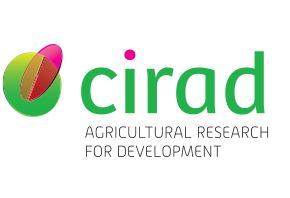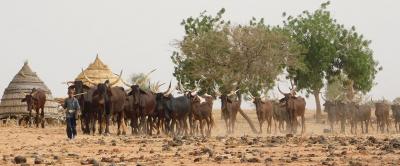- Home
- Worldwide
- CIRAD worldwide
- Projects
- SUSTENTA & INOVA Project
Restoring altered areas in Amazon territories - Sustenta & Inova

© CIRAD
Issues
The territory of the Belém-Brasília national highway, a structural axis of the Amazon, has suffered deforestation for decades and much of the farmland there is now highly degraded. Local farmers and institutions need to find appropriate ways to restore productive systems and landscapes. Different practices and management methods are emerging in agroforestry systems and pastures. The challenge now is to foster and expand these practices. In the context of the Sustenta & Inova project, CIRAD and its long-standing partners, the Federal University of Pará, the Federal Rural University of the Amazon and EMBRAPA, are working to build the capacities of rural stakeholders (farmers, technicians, policymakers) to better understand restoration issues and to define strategies for implementing landscape restoration.
Description
We coordinate three levels of action: promoting agricultural practices, mobilising community leaders and engaging in dialogue with the public authorities. The combination of these three levels is essential to empower rural communities and territories.
- Promoting local knowledge: The researchers assess sustainable agricultural practices with farmers. The most relevant practices for farmers are implemented in rural communities, which become learning spaces.
- Empowering community leaders: Around 80 leaders have been trained to become multipliers in their communities. To support this process, we run an advanced course at the Federal University of Pará entitled “Environmental restoration and agroforestry systems in the Amazon”, with a view to building a knowledge network.
- Creating forums to support policies: Bringing together farmers, technicians, policymakers and scientists, these forums facilitate the joint creation of action proposals and policies to expand the restoration of altered areas.
Expected results
The Sustenta & Inova project aims to achieve results on different scales, which feed into one another to reinforce long-term changes.
- Properties and agricultural practices:
- Creation of “learning fields” on the properties of multiplier farmers;
- Co-construction of an agroforestry system model based on high-value species (cacao and açaí), associated with species for food security and ecological restoration.
- Socio-productive networks:
- Strengthening of community dynamics (around nurseries and seed exchanges);
- Emergence of new socio-bioeconomy sectors;
- Scaling up through training for community leaders who engage in their communities and municipalities.
- Territory:
- To compensate for institutional fragility, creation of multi-stakeholder forums to strengthen representation spaces (institutional representation, communication between institutions) and to propose actions and policies;
- Legislative instruments and territorial intelligence (environmental laws, zoning, certification of territories).
























